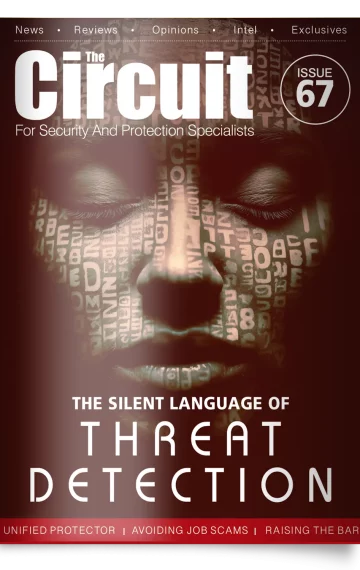“If you happen to see me out somewhere know that I’m not gonna take a picture I’m done taking pictures,” he wrote. “It has gotten to the point that people won’t even say hi to me or recognize me as a human, I feel like a zoo animal, and I wanna be able to keep my sanity. I realize people will be disappointed but I don’t owe anybody a picture. and people who say ‘but I bought ur album’ know that you got my album and you got what you paid for AN ALBUM! It doesn’t say in the fine print whenever you see me you also get a photo.”
These are the words of one of the biggest superstar’s in celebrity entertainment. This international singer, who is known for having a very rabid fan base, made this announcement on the social media platform Instagram and it quickly spread like wildfire. Many wondered how it would affect his popularity, as well as future revenue, while others asked the pressing question, “is anyone going to respect his wishes?” Those of us on the Protection side of the table looked at a deeper question, namely, how would we go about enforcing the client’s wishes?
Fans are fans, but for some, the original root word is much more applicable, “fanatic.” Those are the ones that literally will do anything to gain access to the object of their adoration, in this case, the celebrity. For years the ultimate expression of having made contact with the VIP was the autograph. Pen and paper were produced, and an oft-times illegible scribble was signed by the public figure in question. Sure, some took these autographs and sold them for money, but many kept them as a memory of the rare occasion when they met their idols.
However, now the paradigm has shifted. Autographs are now a thing of the past, a last resort when the ideal method of validation can’t happen: The photograph. We have all heard the old saying, “Pictures are worth a thousand words,” so who wants an autograph when a photo with your favorite celebrity conveys much more perceived authenticity? This also has value in the arena of SOCIAL capital.
However, much like everything else in this new era, the rapid expansion of technology creates change. With the advent of Social Media, combined with the versatility of the new smartphones that have inundated the market for the past several years, the traditional photograph has now given way to the “Selfie.”
In case anyone has been living under a rock, I’ll give you the Oxford Dictionary definition (yes, it made the dictionary).
Selfie: “a photograph that one has taken of oneself, typically with a smartphone or webcam and uploaded to a social media website”.
However, as it relates to this conversation, the Selfies aren’t only restricted to one’s self, it is now the preferred method of showing that the fan has met the celebrity in the flesh. Even if it is only in passing.
From a security perspective, it is both a challenging and frustrating one. For one the very act interrupts the process of conveying the Protectee from Point A to Point B. The Client must literally stop on the “X” for the photo to occur. In an environment with multiple fans, that could mean multiple stops for extended periods. Additionally, the method most fans have gravitated to is outstretching one arm to frame and take the photo, while placing their other hand on the shoulder of the Protectee. Every Professional can see the vulnerable position that puts our charge in. Be it malicious or accidental, an unknown person that is allowed to put what is essentially the beginning of a headlock on the client could set the scene for disaster.
So how do we mitigate?
For one, I think as Protectors it is ok to be vocal about your intentions, this is a utilization of the softer skills. If the plan calls for no photography, you have to convey this in clear and direct terms to the fans. Contrary to some beliefs, this can be done without being aggressive or belligerent. With that said, you should suggest to the client that this rule not be an absolute. I say that because one photo and the happy fan on their way is much more efficient than a protracted argument with a disgruntled (former) supporter, who simply cannot understand why their Idol can’t spare a moment. This is not capitulating out of weakness, it is looking at the big picture of continuing the movement efficiently while keeping with the philosophy of ‘Protect the Client/ Protect the Client’s Image’. Again, this is a suggestion that should be discussed in advance, of course the Protectee has the right to overrule it, and in the case of the entertainer mentioned at the start of the column, if they are adamant, what can you do but try and create the best security plan that honors their wishes.
Make no mistake about it, in 2016 the only way to reduce the number of fans that want to take Selfies is to restrict the client’s movements in public. You can not directly “control” the fans. You can put up roadblocks and obstacles, however, the mere fact that a highly recognizable public figure is in public is going to attract onlookers and the inevitable requests. If your Protectee does not want to be photographed, the security perimeter will need to be pushed out and that will require manpower and the knowledge that the policy might affect his or her public image. Independent of any of that, I would try and dissuade the “arm around the shoulder” when at all possible by educating the client to the risks beforehand. I also utilize verbal instructions to the fan, followed by a light tap on the offending arm if necessary.
While I do not know how effective the policy of the Celebrity who publicly declared his new position is going to be. I do know that for his Protective Team, their actions will now be much more under the microscope as they will have to balance reacting (to the client wishes), while not overreacting to the “Fan-atic” who won’t take no for an answer.
By: Elijah Shaw
Elijah Shaw is a Security Consultant and Instructor who specializes in working with Celebrity Clientele. He is also the current National Director of the North American Bodyguard Association.


Well put. Protecting the client as well as the clients image would take a bit of balance.